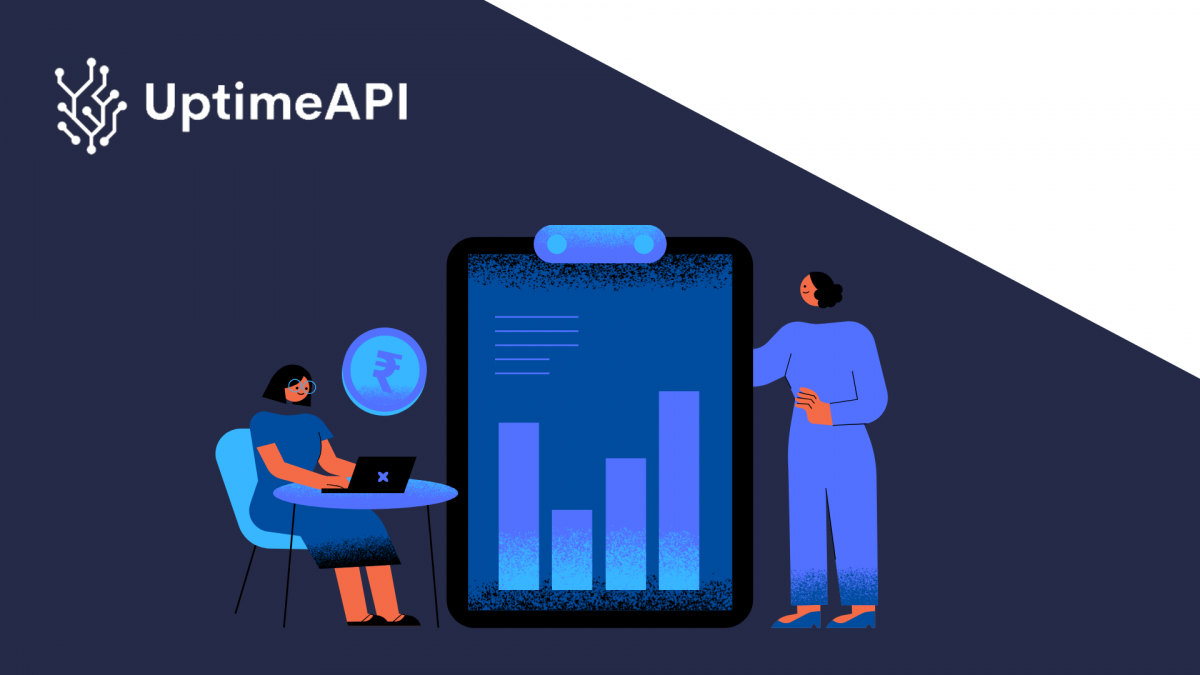API monitoring is crucial for maintaining the performance and reliability of your applications. It ensures your APIs are functioning correctly, providing a seamless experience for users, and quickly identifying and resolving any issues that arise. In this comprehensive guide, we’ll explore how to effectively monitor an API using Uptime API, a powerful tool designed to make API straightforward and efficient.
Comprehensive Guide To API Monitoring
API monitoring involves regularly checking the performance, availability, and functionality of your APIs. By using Uptime API, you can automate this process and receive real-time alerts when issues are detected. Here’s how to get started with API monitoring:
- Sign Up for Uptime API: Create an account on the Uptime API platform to access its monitoring tools.
- Add Your API: Enter the details of the API you want to monitor, including the endpoint and HTTP method.
- Set Up Monitoring Parameters: Configure how often Uptime API should check your API and set the conditions for alerts.
- Activate Monitoring: Enable monitoring to start receiving data and alerts about your API’s performance.
- Analyze Reports: Regularly review the performance reports to identify trends and potential issues.

Master API Monitoring: Comprehensive Guide
To master API , it’s essential to understand each step in detail. Let’s dive deeper into each component of the monitoring process:
Sign Up For Uptime API
Begin by visiting the Uptime API website and signing up for an account. This process is quick and straightforward, requiring only basic information such as your name and email address. Once registered, you’ll receive a confirmation email to verify your account.
Add Your API
After logging into your Uptime API dashboard, look for the option to add a new API. You’ll need to provide the API endpoint (URL) and specify the HTTP method used (GET, POST, etc.). This information allows Uptime API to accurately monitor your API’s performance.
Set Up Monitoring Parameters
Customization is key to effective monitoring. Determine how frequently you want Uptime API to check your API’s status, such as every minute or every five minutes. Also, configure alert conditions—for instance, you might want to be alerted if the response time exceeds a certain threshold or if the API returns an error status code. Choose your preferred alert method, such as email or SMS.
Activate Monitoring
With your API details and settings configured, it’s time to activate the monitoring. Uptime API will start tracking your API’s performance immediately, providing real-time data on its health. You’ll receive metrics like response times, error rates, and uptime percentages.
Analyze Reports
Regularly analyzing the data collected by Uptime API is crucial. Check the performance reports to identify trends and potential issues. Pay close attention to alerts, as they indicate problems that need immediate attention. Quick responses to these alerts can prevent minor issues from becoming major problems.
Your API Monitoring Comprehensive Guide
Understanding the importance of each step in the API process is vital for effective implementation. This comprehensive guide aims to provide you with all the necessary information to monitor your APIs efficiently using Uptime API.
Comprehensive Guide: How To Monitor An API
Monitoring an API involves several critical steps. By following this guide, you can ensure your APIs are functioning optimally, providing the best possible experience for your users. Uptime API simplifies the process, making it easy to keep your APIs in check.
Sign Up and Add Your API
The first steps are signing up for Uptime API and adding your API to the dashboard. This initial setup is crucial for starting the monitoring process. Ensure you enter accurate details about your API to get the most reliable data.
Configure and Activate Monitoring
Setting up monitoring parameters tailored to your needs is essential. Once configured, activate the monitoring to start collecting real-time data on your API’s performance. Uptime API will begin tracking and alerting you to any issues.
Regular Analysis and Response
Consistently analyze the data and reports generated by Uptime API. This practice helps you stay ahead of potential issues and maintain optimal API performance. Respond swiftly to alerts to mitigate any problems that arise.
Simplified API Monitoring: Comprehensive Guide
This API doesn’t have to be complicated. With Uptime API, you can simplify the process and ensure your APIs are performing at their best. This comprehensive guide breaks down each step, making it easy to implement effective API monitoring.
API Monitoring Made Easy: Comprehensive Guide
Uptime API is designed to make API easy for developers. From initial setup to ongoing analysis, this guide provides all the information you need to monitor your APIs effectively. Follow these steps to ensure your APIs are reliable and efficient.
The Ultimate Guide
This ultimate guide covers everything you need to know about API monitoring. By using Uptime API, you can streamline the monitoring process and maintain top-notch API performance. Implement these steps to master API monitoring and ensure your applications run smoothly.
In conclusion, effective API monitoring is essential for maintaining the reliability and performance of your applications. By following this comprehensive guide and utilizing Uptime API, you can ensure your APIs are always in top condition, providing a seamless experience for your users.
Related post: https://www.thestartupfounder.com/api-monitoring-boost-your-api-stability/

